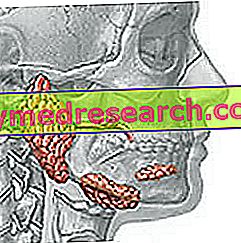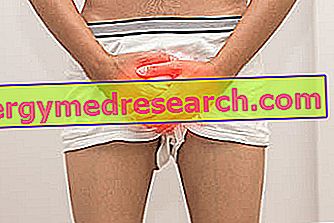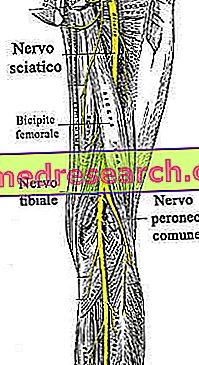Definition of sialorrhea
Sialorrhoea and ptialism are synonymous, taken from medical language, which denote an abnormal and excessive accumulation of saliva in the buccal cavity, sometimes associated with a salivary hypersecretion. The term "sialorrhea" derives from the Greek root "σάλιο" (saliva) and indicates the "flow" of the saliva that accumulates in the mouth and often drips from the lips.
Characteristics of saliva

Incidence of sialorrhea
Sialorrhea can manifest itself as a primary or secondary condition; the abundant and excessive salivation, moreover, could represent an occasional phenomenon, therefore resolving itself during the day, or depend on secondary factors that we will analyze during the article.
We speak of emotional sialorrhea when the abnormal salivary production is caused by psychogenic factors: indeed, it is not unusual to note an overabundant production of saliva in anxious subjects. To give an example, in particularly agitated patients who undergo dental surgery, there is an excessive production of saliva, so as to force the dentist to continually aspirate the saliva from the patient's mouth with the cannula.
However, sialorrhea is a recurrent phenomenon (and especially) during pregnancy and during senescence, periods of life in which many cases of sialorrhea can be recorded.
Sialorrhea and pregnancy
During pregnancy, pregnant women often complain of "uncontrolled, abundant and annoying salivation" which generally continues until the third-fourth month of gestation. Hyperemesis gravidarum indicates a condition related to pregnancy in which the future mother suffers from nausea and vomiting, disorders that create considerable discomfort: it is understandable that the two phenomena (sialorrhea and hyperemesis gravidarum) are closely linked.
Sialorrhea in pregnancy seems to be caused not so much by the increase in salivary secretion as by a considerable difficulty in swallowing. The sialorrhea during the expected wait is considered a real emotional ptialism, since many women show themselves particularly sensitive to stress induced by pregnancy: in the latter case, the sialorrhea may continue even after the fourth month of gestation, up to persist, even for all nine months of pregnancy. By reflex, the woman tends to continually swallow the excess saliva produced: in doing so, however, air is also introduced, which in turn could be a possible trigger for aerofagia and for the disorders affecting the digestive system. in general.
Sialorrhea and senescence
Sialorrhea is a widespread condition among the elderly, caused essentially by dental prostheses, which could cause some difficulty in swallowing: in this regard, saliva tends to come out of the mouth and to deposit on the sides of the lips. Once again, in similar circumstances, salivation seems increased, but in reality the quantity of saliva remains unchanged: the cause that causes the accumulation of saliva is related to the mere difficulty of swallowing.
As we know, with age, men and women are more subject to pathologies, due to a general weakening of the organism: the statistics have registered a correlation between Parkinson's disease, extrapyramidal syndromes and myasthenia gravis, pathologies typical of old age. Many elderly people, therefore, are frequent consumers of some drugs, which, as we will see in the next section, contribute to the formation of sialorrhea.
Sialorrhea and drugs
The excessive use of drugs could also have consequences in terms of salivation and generate sialorrhea: if during pregnancy and senescence the sialorrhea is mainly associated with an accumulation of saliva in the mouth, the use of particular drugs could cause not only an additional accumulation of saliva, but also an overproduction of the same.
Numerous pharmaceutical substances can induce sleepiness and slow down movements, causing difficulty in swallowing with consequent "stagnation" of saliva in the buccal cavity. Benzodiazepines in general and nitrazepam in particular could cause abnormal saliva accumulation in the mouth and stimulate hyper secretion of the salivary glands. Neuroleptic drugs can generate opposing side effects: some medicinal products can cause dry mouth, other sialorrhea (eg clozapine and olanzapine). Still, the adrenaline, albumin (important in the regulation of plasma volume), irinotecan (phymiotherapeutic) and cholinergic drugs (used, for example, in Alzheimer's) stimulate the production of saliva, while it was observed that suxamethonium (substance used as an adjuvant in anesthesia and in orthopedic treatments) it exerts its effect by preventing proper swallowing, therefore favoring sialorrhea.
Sialorrhoea and related disorders
The sialorrhea could be a source of embarrassment, in addition to creating, in some cases, significant relational and language problems; when the saliva is particularly dense and abundant, the sialorrhea can indeed create considerable difficulties in interpersonal relationships, to the point of inducing a rejection of one's own image. Sialorrhea, therefore, can also reflect psychological conditions that could sometimes result in pseudo-depressive forms.
Care
When sialorrhea is caused by the patient's psychotic state, the doctor may recommend medications that attenuate the subject's state of anxiety, since by reflex, the anxiolytic effect causes a decrease in the production of saliva. The specialist can also recommend anticholinergic medicinal products, designed to weaken saliva secretion without completely eliminating it.
When sialorrhea is a very problematic phenomenon for verbalization and interpersonal relationships, parasympathetic denervation is the preferred surgical treatment, the "last resort" for eliminating sialorrhea.



